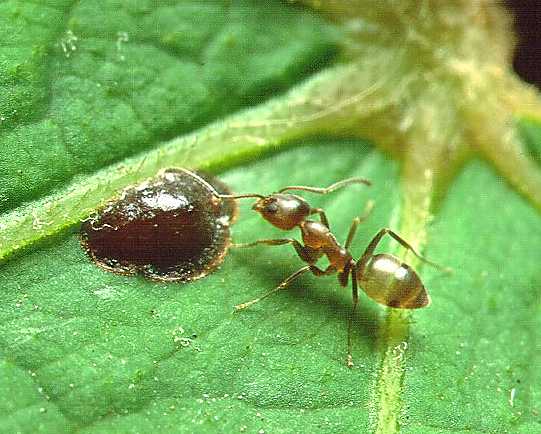Invasive Argentine ants carry a virus linked to colony collapse in bees as well another insect virus new to science, according to a first-of-its-kind New Zealand study.
 The new research, published today in Biology Letters, hunted for evidence of insect viruses in Argentine ant populations from New Zealand, Australia and Argentina.
The new research, published today in Biology Letters, hunted for evidence of insect viruses in Argentine ant populations from New Zealand, Australia and Argentina.
One of the key findings was the presence of Deformed Wing Virus in New Zealand Argentine ants.
“This discovery tells us that Argentine ants are much more of a problem than we previously thought,” said study author Prof Phil Lester, Victoria University Wellington, in a media release.
“They host the same Deformed Wing Virus strain found in bees and wasps in New Zealand, and this virus has contributed to declines in honey bee populations around the world. Argentine ants are known to raid beehives and also forage in the same environment as honey bees. Such close contact is bad for bees, as their association promotes pathogen exchange,” he said.
But the researchers also discovered an entirely new virus in the invasive pest species that could assist the ants’ own population decline.
“This virus hasn’t been seen before, but it’s related to other viruses that can devastate populations of other insect species. If managed correctly it could be used as a biopesticide both in New Zealand and overseas,” Professor Lester says.
The Science Media Centre collected the following expert commentary.
Prof Alison Mercer, Department of Zoology, University of Otago, comments:
“Deformed Wing Virus has been identified in ants before, so this result is not altogether surprising. Their discovery of a novel virus LHUV-1 in the Argentine ant, however, is very interesting – it will be important to examine the impacts of this virus on honey bee populations ”
Is it possible the ants brought the virus to New Zealand?
“Deformed Wing Virus presence is strongly correlated with the parasitic mite, Varroa destructor, which arrived in New Zealand around the year 2000 and spread quickly across the country. The prevalence of Deformed Wing Virus in New Zealand (i.e. the proportion of honey bee colonies in which the virus could be detected) increased very dramatically after the arrival of the mite. This would suggest that ants were not the main culprits.”